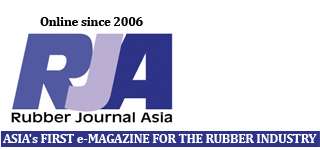
Against the backdrop of weak demand from the automotive industry, Germany-based speciality chemicals firm Lanxess, which is facing what it says is a “temporary weakness in demand for its synthetic rubber”, is aiming to cut costs by EUR100 million per year from 2015. As part of a restructuring programme, it plans to cut about 1,000 jobs and divest non-core assets, like NBR and rubber chemicals, accounting for about EUR500 million in annual sales. Restructuring has already been implemented within the Rubber Chemicals business unit, which is closing a site in South Africa and downsizing its operations in Belgium.
In a statement released, it said, “The positions will be phased out through a voluntary separation programme, which includes early retirement packages and severance pay. In addition, the variable compensation for the current business year will be reduced for those who are eligible. This includes the Board of Management.”
Speaking at a Media Day, Chairman Axel Heitmann confirmed that the 2013 earnings outlook, before interest, taxes, depreciation and amortisation (EBITDA), adjusted for one-offs and potential inventory devaluations, will be EUR700-800 million. The firm abandoned its 2014 profit guidance last month after reporting a 95% drop in second quarter net profit.
Meanwhile, though Lanxess will maintain its current structure of 14 business units under its three established segments, it is pursuing strategic options for specific non-core businesses. The non-core activities have combined sales of roughly EUR500 million, close to EUR30 million in EBITDA pre exceptionals, and a headcount of roughly 1,000. The activities include the High Performance Materials (HPM) business unit’s Perlon-Monofil business line, Rubber Chemicals’ (RUC) accelerators and antioxidants business lines, and High Performance Elastomers’ (HPE) nitrile butadiene rubber business line. The affected sites are in Brunsbuettel and Dormagen, Germany; Kallo, Belgium; Bushy Park, US;, Jhagadia, India; La Wantzenau, France; and Nantong, China.
“Each of these businesses is well positioned in its market, but can develop better over time with a different partner,” said Heitmann.
In the medium to long term, it also aims to buy businesses to diversify away from its main rubber activities, to strengthen its Advanced Intermediates and Performance Chemicals segments. “Any potential additions to the company must present a clear strategic and cultural fit, as well as being accretive to key financial metrics,” said Heitmann.
Lanxess will also continue to give priority to organic growth. Capital expenditures have been reduced to roughly EUR600 million this year, while at the same time key strategic projects are being implemented. In the future, the focus will be more on smaller projects and debottleneckings.
The firm is currently pushing ahead with three important investment projects serving the megatrend mobility. They are a neodymium polybutadiene rubber (Nd-PBR) plant in Singapore, an ethylene propylene diene monomer (EPDM) rubber plant in China and a polyamide plant in Belgium. Construction is progressing according to plan.
Lanxess said it believes the long-term growth fundamentals are intact despite the temporary weakness in demand. According to Heitmann, “We will continue to differentiate ourselves from our competitors as a result of our focus on high-performance products. Our investments in plants for high-performance rubbers and lightweight materials strengthen our position as one of the leading suppliers to the tyre and automotive industries and will serve us very well when the markets recover,” said Heitmann. “They will also bring us closer to our mid-term earnings goal of EUR1.8 billion EBITDA pre exceptionals in 2018.”
Lanxess had sales of EUR9.1 billion in 2012 and roughly 17,500 employees in 31 countries. The company is currently represented at 52 production sites worldwide.
